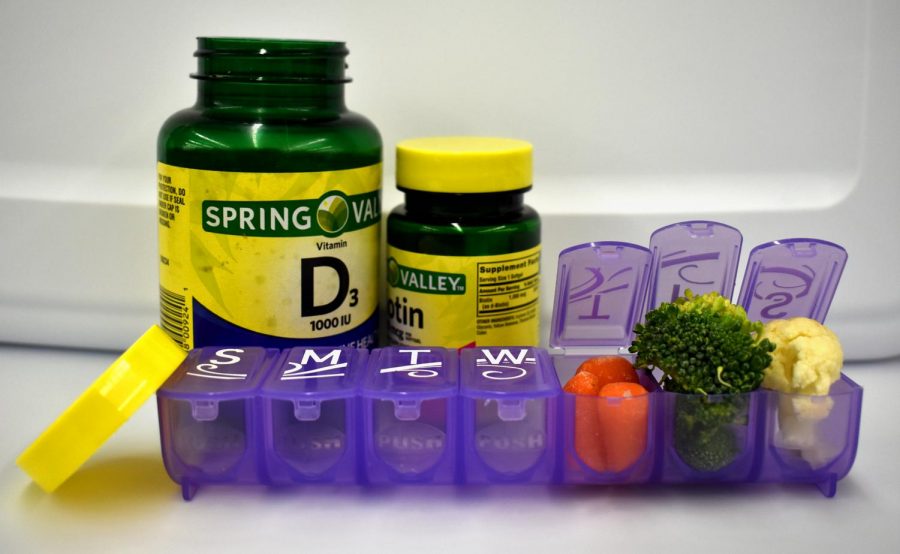Americans lack necessary vitamins, minerals
Ingesting nutrients from healthy food is easier, cheaper option
KEISHA BROKAW | Evergreen Photo Illustration
Those who do not ingest enough iron regularly will feel tired but overtime can develop extreme fatigue as a result, Dietitian Alice Ma says.
November 8, 2017
Consuming supplements is one way to avoid nutrient deficiencies, although a well-balanced diet is more effective, WSU Dietician Alice Ma said.
“In most cases though, you don’t absorb as much vitamins and minerals from supplements,” Ma said. “It’s easiest and much cheaper to get them from naturally occurring forms from food.”
Fruits and vegetables vary in color because of their abundance of vitamins, minerals and antioxidants, and each of them plays an important role in overall health, she said.
In the U.S., vitamin B6 deficiencies impact the most people, according to the Centers for Disease Control and Prevention website.
Vitamin B6 is crucial for protein metabolism and is involved in cognitive development and immune system functions. Deficiency may result in anemia, or low red blood cell count, according to The National Institutes of Health website.
Foods with higher than 25 percent of the daily value of vitamin B6 in a single serving, in order from highest to lowest, include chickpeas, beef liver, yellowfin tuna, chicken breast and fortified cereals, according to the NIH.
A lack of vitamin B6 can cause fatigue, similar to a lack of iron, the next leading deficiency in the U.S., according to the CDC.
“Iron deficit has an immediate effect of general tiredness,” Ma said. “Long-term shortages can result in extreme fatigue to the point where you can’t even get out of bed. It can get pretty bad.”
Ma said fatigue is a symptom because iron helps deliver oxygen to cells. Women are more likely to have iron deficiencies because they lose blood during menstruation.
Many female students at WSU said they have had iron deficiencies or have taken iron supplements before.
Sophomore Shannon Emmons said she tried taking supplements, but they made her sick. She said she eats a lot of spinach now. She replaces lettuce with spinach in sandwiches, salads, tacos and other food.
Cory Smith, retail sales associate from the Moscow General Nutrition Center, said many customers have supplement prescriptions from doctors.
Among female customers, many are on iron supplements, Smith said. This needs to be considered when taking other vitamins.
“Definitely do not take iron supplements without seeing a doctor first,” Ma said, “because they are very easy to overdose on.”
Treatment varies based on how well a person’s body absorbs iron, she said.
Fortified foods, such as cereal or milk, contain added nutrients and help decrease a large portion of deficiencies found in the U.S., according to the CDC website.
A serving of fortified breakfast cereal contains 100 percent of the daily value of iron. Other food sources high in iron are oysters, white beans and cacao, according to the NIH website.
Ma said vitamin D is the most difficult to find and is the third highest deficiency, but is in fortified products and mushrooms exposed to UV lighting.
Vitamin D helps the body process calcium. A shortage can result in osteoporosis, or weak bones, Ma said. This increases the chances of breaking and fracturing bones.
People also receive small doses of vitamin D from the sun, Ma said. The amount varies based on skin tone and proximity to the equator. Places farther north can give people less exposure to this vitamin.
“Vitamin D is an issue we need to be careful about,” Ma said, “especially in the winter and especially in this area.”
She said those focused on eating a plant-based diet are more likely to ingest most of the necessary nutrients.
“You’re eating food already,” she said. “You might as well make it nutritious.”










